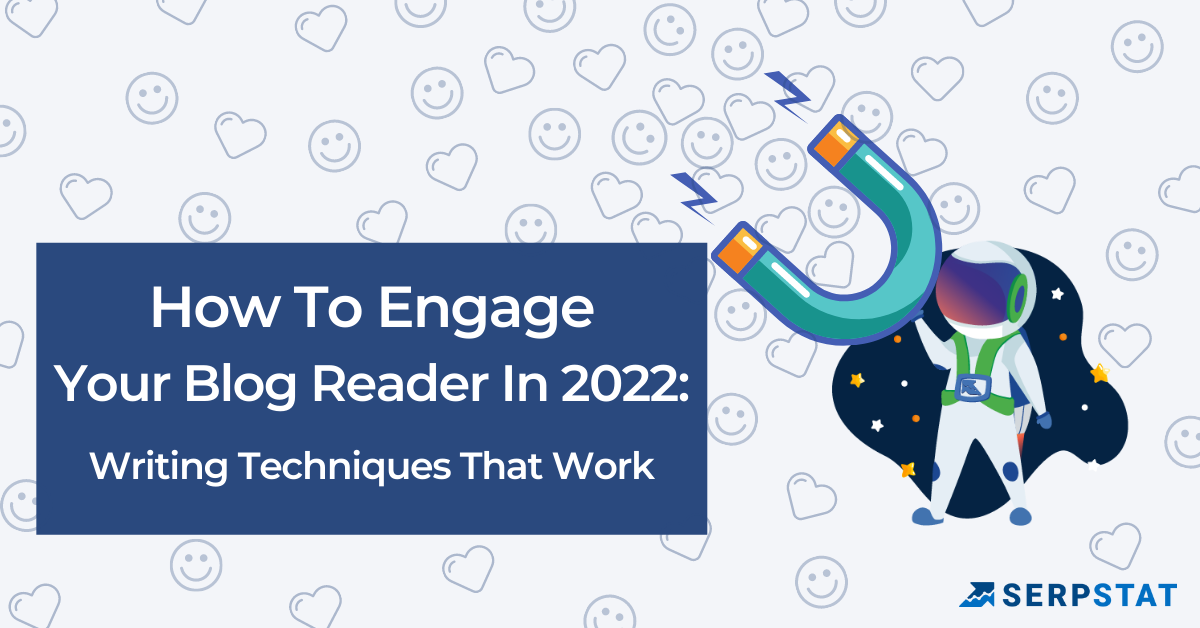The Power of Humanizing AI Text: Bridging the Gap between Technology and Emotion
Humanizing AI text is essential in today's digital age, where the demand for authentic and engaging content is paramount.

In today's digital age, AI-generated content is becoming increasingly prevalent. With advancements in artificial intelligence and natural language processing, algorithms can now generate human-like text. However, ensuring this content is indistinguishable from human-written text remains challenging. This is where the concept of humanizing AI-generated text comes into play.
Humanizing AI text refers to the ability to create content with the same qualities and characteristics as written by a human writer. It involves developing advanced algorithms and tools to convert AI-generated content into a format resembling human language and writing style.
The importance of humanizing AI-generated text cannot be overstated. In a world where vast amounts of content are published daily on websites and search engines, the need for high-quality, personalized content is paramount. Without the ability to humanize AI-generated text, the content piece may lack the emotional connection and authenticity that human-written text possesses.
By humanizing AI text, content creators can provide a personalized experience for readers, ensuring that the content resonates with them on a deeper level. It also allows for creating genuine connections between customer inquiries and AI-generated responses. Moreover, human-like text enhances the overall content quality, making it more valuable for search engines and users.
Humanizing AI-generated text will undoubtedly remain a critical aspect of the content creation process as AI continues to evolve. The gap between human and AI-written content can be bridged with advanced algorithms and innovative tools, resulting in a fantastic tool that produces undetectable AI content.
- Definition of AI Text
- Reasons to Humanize AI-Generated Content
- Techniques for Humanizing AI Text
- Issues Associated With Humanizing AI Text
- Best Practices for Humanizing AI Text
- Humanizing the Binary Brain
- FAQ: Humanizing AI Text
Definition of AI Text
AI text, or AI-generated content, refers to using artificial intelligence and natural language processing techniques to generate written content. This innovative technology allows algorithms to mimic human-like language and sentence structure, creating text that appears as if a human wrote it.
AI text aims to produce high-quality, personalized content that resonates with readers and provides a genuine connection. Using advanced algorithms and tools, content creators can convert AI-generated content into a format resembling human language and writing style.
This process, known as humanizing AI text, ensures that the content piece possesses the same qualities and characteristics as content written by a human writer.
Humanizing AI text is essential in today's digital age, where the demand for authentic and engaging content is paramount.
Benefits of Humanizing AI Text
Humanizing AI text provides numerous benefits for content creators, both in terms of the quality of the content and in terms of cost savings. Firstly, humanizing AI-generated text ensures that readers encounter content that resonates with them on an emotional level.
By taking into account customers' individual preferences, content can be tailored to their specific needs and interests. This creates an authentic connection between the content creator and the reader, further enhancing engagement with the content.

Additionally, humanizing AI text allows for more efficient use of resources, as algorithms can produce written content faster than a human writer. This reduced cost enables content creators to produce higher volumes of quality material in an efficient manner.
Ultimately, through humanizing AI-generated text, content creators can provide their readers with a personalized experience while saving time and money.
Reasons to Humanize AI-Generated Content
As artificial intelligence (AI) continues to advance, so does its ability to generate content. AI-generated text has become increasingly prevalent, with advanced algorithms and natural language processing allowing for the creation of human-like content.
However, there are reasons to humanize AI-generated content to enhance the overall user experience and create more authentic connections.
Personalized Experience:
One of the key benefits of humanizing AI-generated content is the ability to provide a personalized experience for users. While AI can generate vast amounts of content quickly, it often lacks the ability to understand personal experiences and tailor content accordingly fully.
By incorporating human elements into the content creation process, such as emotions and personalization, the text can be more relatable and engaging for the readers.
Authentic Connections:
Humanized AI-generated content can also help establish authentic connections with the audience. While AI may be able to generate content that mimics human sentence structure and language patterns, it often lacks the emotional intelligence and understanding required to connect with readers on a deeper level truly.
Humanizing the content makes it possible to create a more genuine connection with the audience, allowing for more meaningful interactions and building trust.
High-Quality and Genuine Content:
Humanizing AI-generated content can also contribute to the overall quality of the text. While AI algorithms can generate content at a rapid pace, it often lacks the ability to fully grasp the nuances of human language and produce high-quality, nuanced content.
By integrating human writers into the process, the output can be refined and elevated to meet the standards of human-written content. This ensures that the text is grammatically correct and coherent and aligns with the brand's tone and voice, making it more genuine and impactful.
Humanizing AI-generated content brings several advantages, including a personalized experience, authentic connections, and high-quality and genuine content.

By incorporating human elements into the content creation process, AI-generated text can become more relatable, engaging, and tailored to the target audience's needs, ultimately enhancing the overall user experience.
Understandability and Readability
Understanding the importance of understandability and readability is crucial when humanizing AI-generated content. While AI algorithms may be capable of creating content that mimics human language, they often fall short in making the content easily understandable and readable for the intended audience.
Improving understandability and readability involves implementing various techniques and strategies.
Firstly, simplifying complex language and using plain, concise wording can make the content more accessible to a wider audience. Clear sentence structures, with logical progression and proper grammar, further enhance the readability of the text.
Additionally, incorporating headings and bullet points helps break down information and make it easier to digest.

By making content easier to comprehend, the benefits are significant. Users are more likely to engage with and understand the content, increasing user satisfaction and retention. An improved user experience ensures the audience can navigate the content effortlessly and extract the intended message and value.
When humanizing AI-generated content, it is imperative to prioritize understandability and readability. By applying techniques such as simplifying language, using clear sentence structures, and incorporating visual aids, the content becomes more accessible and user-friendly. This, in turn, fosters better engagement and enhances the overall user experience.
Engagement with Readers
Engaging readers is crucial for creating a meaningful connection and a memorable experience. Humanizing AI text can significantly enhance reader engagement by incorporating emotional intelligence and empathetic responses.
By understanding the emotions and needs of the audience, AI-generated content can adapt its tone and language to resonate with readers on a deeper level. Introducing elements of empathy and understanding in the text can make readers feel heard and understood, leading to a stronger emotional connection.
Conversion tools that offer AI-to-human translation are vital in enabling intelligent conversations between machines and humans.
Particularly in areas like customer service and virtual assistants, these tools bridge the gap between human language and AI-generated responses. They facilitate natural and engaging interactions, enabling machines to deliver personalized and empathetic responses to customer inquiries.
Effective communication and interaction with AI systems bring numerous benefits for engaging readers.
Firstly, it creates a more personalized experience, where content is tailored to the reader's preferences and interests. This customization builds trust and loyalty, as readers feel understood and valued.
Additionally, AI-generated content can provide real-time suggestions and recommendations, enhancing the reader's journey and creating a dynamic and interactive experience.
Humanizing AI text through emotional intelligence and empathetic responses significantly enhances engagement with readers. The AI-to-human translation offered by conversion tools further enables intelligent conversations between machines and humans.
Effective communication and interaction with AI systems bring numerous benefits, including personalized experiences and dynamic interactions, ensuring readers are fully engaged and satisfied.
Improving User Experience
Several techniques and strategies can be implemented to enhance the user experience when humanizing AI-generated content. The key is creating personalized and relatable user experiences, fostering authentic connections, and resonating with their emotions.
One effective approach is to employ conversational language in AI-generated content. Using a more natural and informal tone makes the content more approachable and engaging. This conversational style mimics human interaction, making the user feel like they are having a genuine conversation with the AI.
Personalization is another crucial aspect. Tailoring the content to individual preferences and interests ensures that users feel heard and understood. By leveraging advanced algorithms and natural language processing, AI can analyze user data and deliver highly relevant and valuable content to the user's needs.

Creating authentic connections is also paramount. AI-generated content should strive to establish emotional resonance and forge genuine connections with the audience. By understanding the emotions and motivations of users, the content can address their needs and concerns in a compassionate and empathetic manner.
Ultimately, the user experience is greatly improved when AI-generated content can provide personalized, relatable, and compassionate interactions. By incorporating conversational language, personalization, and creating authentic connections, AI can enhance the user's journey and foster a deeper connection with the audience.
Techniques for Humanizing AI Text
Regarding AI-generated content, the challenge lies in making it feel more human-like and relatable to users. By employing specific techniques, AI can create personalized and authentic experiences that resonate with users on a deeper level.
These techniques can make AI-generated content feel more natural and engaging, from using conversational language to personalization and creating genuine connections.
AI can bridge the gap between technology and human interaction by implementing these strategies, providing users with high-quality, relevant, and emotionally resonant content.
Using Natural Language Processing (NLP)
Natural Language Processing (NLP) plays a crucial role in humanizing AI text and enhancing the content creation process. By harnessing the power of NLP technology, an AI text converter can understand the complexities of natural language, including grammar, syntax, and context.
NLP allows the AI text converter to analyze and interpret human language patterns, enabling it to generate text that mimics human speech. This technology ensures that the output is grammatically accurate and helps create text that feels more authentic and human-like.
With NLP, the AI text converter can recognize and interpret the nuances of language, allowing it to generate content tailored to the audience's specific needs. It can produce personalized experiences by using language models trained on vast amounts of human-written text.
Using NLP techniques, AI-generated content can create genuine connections with the readers, providing an emotional connection through conversational language and authentic interactions. This amazing tool simplifies the content creation process and helps deliver high-quality and tailored content for search engines, blog posts, customer inquiries, and more.
Natural Language Processing (NLP) is a crucial technology that enables AI text converters to understand human language, grammar, and syntax, resulting in human-like and personalized content.
Advanced Algorithms and Tools
Advanced algorithms and tools are crucial in humanizing AI text and improving the conversion process from AI language to human language. These sophisticated technologies leverage artificial intelligence and natural language processing to create human-like content indistinguishable from text written by humans.
One of the critical technologies used in this field is advanced algorithms. These algorithms are designed to analyze and interpret human language patterns, enabling the AI text converter to generate text that mimics human speech.
By understanding the sentence structure, context, and grammar rules, these algorithms ensure that the output is grammatically accurate and coherent.
Additionally, advanced tools are employed to enhance the conversion process.
These tools utilize complex techniques to recognize and interpret the nuances of language, allowing the AI text converter to produce content tailored to the audience's specific needs. They leverage language models trained on vast amounts of human-written text, enabling personalized experiences and generating high-quality content.
Some commonly utilized techniques and technologies in this field include natural language processing (NLP), machine learning, deep learning, and neural networks. These technologies enable the AI text converter to learn from and analyze large datasets, improving its ability to generate human-like text.

Advanced algorithms and tools are essential in humanizing AI text and transforming AI language into human language. They contribute to delivering personalized, high-quality, and authentic content for various purposes, such as search engine optimization, blog posts, customer inquiries, and more.
Converter Tools to Transform Machine Content to Human-Like Content
Converter tools play a critical role in transforming machine-generated content into human-like text. These powerful tools utilize advanced algorithms and techniques to remove AI signatures while ensuring that the original meaning and intent of the text are preserved.
By analyzing and understanding the nuances of language, these converter tools can mimic human sentence structures and produce content that closely resembles text written by humans. They carefully consider grammar rules, context, and the overall flow of the text to create a natural-sounding output.

The benefits of using these converter tools are numerous. Firstly, they allow content creators to bypass AI detectors and plagiarism checkers, making it difficult to detect that a machine has generated the content. This opens opportunities to use AI-generated content in various contexts without raising suspicions or concerns.
Additionally, these tools enable organizations to produce high-quality content virtually indistinguishable from text written by humans. This ensures the content will resonate with the intended audience and create authentic connections.
By generating genuine and emotionally engaging content, organizations can enhance customer inquiries, create personalized experiences, and establish trust.
Converter tools are instrumental in transforming machine content into human-like text. They remove AI signatures, preserve the original meaning and intent of the text, and offer benefits such as bypassing AI detectors and producing high-quality content.
Issues Associated With Humanizing AI Text
As artificial intelligence technology advances, a growing interest has been in humanizing AI-generated text. By leveraging advanced algorithms and natural language processing (NLP), AI can produce content that closely resembles text written by humans.
However, while there are numerous benefits to humanizing AI text, there are also several important issues that need to be considered.
These issues must be addressed to ensure the responsible use of AI-generated content and to maintain the trust and credibility of organizations utilizing this technology.
Search Engine Optimization (SEO) Challenges
Search Engine Optimization (SEO) poses unique challenges when humanizing AI-generated content. While AI-generated text can provide efficiency and scale in content creation, it may not always meet Google's Expertise, Authoritativeness, and Trustworthiness (EEAT) requirements, potentially leading to penalties.
Google strongly emphasizes delivering high-quality, reliable, and trustworthy content to its users. However, AI-generated content may lack the human touch, personal experiences, and emotional connections that contribute to genuine connections with readers. This can impact the overall content quality and relevance, making it less likely to meet Google's standards.
Moreover, there is an ongoing debate surrounding Google's ability to detect AI content accurately.
While advanced algorithms and natural language processing have improved, Google may still struggle to differentiate between AI-generated and human-written content. This challenges marketers and content creators who aim to use AI-generated text to create valuable content for search engines.
Ensuring that AI-generated content goes through a human text converter tool is crucial to overcome these challenges. This tool helps to add a human touch, refine sentence structure, and ensure that the content meets the EEAT requirements set by Google.
While AI-generated content offers great potential, it is essential to consider the challenges of humanizing such content for SEO. By leveraging human text converter tools and incorporating elements of conversational language, personal experiences, and authentic connections, content creators can provide high-quality, human-like text that meets search engine requirements and user expectations.
Undetectable AI-Written Content
Undetectable AI-written content plays a significant role in modern content creation. With the advancements in sophisticated algorithms and techniques, AI-generated text has become remarkably similar to human-written content, making it almost impossible to distinguish between the two.
Creating indistinguishable content is crucial for bypassing AI detection systems employed by search engines and platforms.
By removing any detectable traces of AI, content creators can ensure that their AI-generated text seamlessly blends with human-written content. This allows marketers and businesses to harness AI's efficiency and scale while delivering genuinely human-like content to readers.
Bypassing AI detectors has several benefits. Firstly, it enables content creators to create vast amounts of high-quality and personalized content at a fraction of the time and cost it would take for human writers. This efficiency helps businesses stay competitive in today's content-driven landscape.

Secondly, the endorsement of professionals is vital when utilizing AI-generated content. Having human experts review and refine the AI-generated text can correct any potential flaws or inaccuracies. This ensures that the final content meets the standards of authenticity, readability, and relevance.
Undetectable AI-written content is a game-changer in content creation. By leveraging sophisticated algorithms and techniques, businesses can produce high-quality, human-like content at scale, bypassing AI detection systems.
Combining AI's efficiency with professionals' expertise helps deliver personalized and engaging content that captivates readers and aligns with search engine requirements.
Best Practices for Humanizing AI Text
When it comes to AI-generated content, one of the key challenges is making it indistinguishable from human-written text. By humanizing AI text, content creators can seamlessly blend it with human-written content, ensuring that it appears genuine and authentic to readers.
By following these best practices, businesses can harness the power of AI while creating high-quality content that connects with their target audience.
Leverage Existing Data Sources
Leveraging existing data sources is a powerful way to humanize AI text and create personalized, engaging content. By drawing from various sources, such as customer inquiries, personal experiences, and blog posts, AI-generated content becomes more authentic and relevant to human readers.
Data from customer inquiries provides valuable insights into customers' specific needs and preferences. By analyzing these inquiries, AI algorithms can understand the language used by customers and generate content that speaks their language. This helps establish an emotional connection and build genuine relationships with customers.

Personal experiences shared by users can also be a rich source of data. By analyzing this information, AI algorithms can understand the nuances of language, sentence structure, and conversational language. This enables them to generate content that sounds more like it was written by a human, enhancing the overall quality and readability of the text.
Additionally, content from blog posts provides a wealth of information that can be used to create personalized content. By extracting key insights from blog posts, AI algorithms can understand different audiences' specific interests and preferences. This allows for creating tailored content that resonates with readers and provides a personalized experience.
Leveraging existing data sources such as customer inquiries, personal experiences, and blog posts allows AI-generated content to be more authentic, relevant, and personalized. By utilizing these sources effectively, AI algorithms can create high-quality content that establishes genuine connections with readers.
Humanizing the Binary Brain
In conclusion, humanizing AI text is of utmost importance for improving communication and resonating better with the audience. By analyzing data from customer inquiries, personal experiences, and blog posts, AI algorithms can generate content that speaks the language of customers, understands nuances in language and sentence structure, and creates personalized experiences.
The key takeaway is that humanizing AI text enhances the quality and readability of the content. It helps establish emotional connections and build genuine relationships with customers, leading to improved engagement. Genuine and authentic connections foster trust and loyalty.
By humanizing AI text, businesses can provide a more personalized user experience. By understanding the specific interests and preferences of different audiences, AI algorithms can create tailored content that resonates with readers and meets their individual needs. This leads to increased customer satisfaction and loyalty.
To humanize AI text effectively, businesses should leverage existing data sources such as customer inquiries, personal experiences, and blog posts. These data sources provide valuable insights into the language, preferences, and behaviors of the target audience. By understanding these nuances, AI algorithms can generate content that is more human-like and relevant.
In a fast-paced digital world, humanizing AI text is crucial for businesses to stand out and connect with their audience on a deeper level. By incorporating this approach into their content strategy, businesses can create high-quality, engaging, and personalized content that delivers meaningful experiences to their customers.
FAQ: Humanizing AI Text
What does "Content To Human" mean?
It refers to the process of converting machine-generated content into a format that sounds more human-like, ensuring it resonates with readers.
How do "Humanizer Tools" work?
Humanizer tools utilize advanced Natural Language Processing Techniques to transform mechanical or repetitive content into authentic, human-like text. They ensure consistency in tone and avoid a mechanical tone often seen in default algorithms.
What is the significance of "Authentic Content" in AI-generated text?
Authentic content ensures user engagement and provides a human experience. It makes the content relatable, trustworthy, and more engaging for readers.
How does "Content Detection" work in online tools?
Content detection tools, or content detectors, scan online content on websites to identify whether the content is AI-generated or human-written. They ensure the authenticity and originality of the content.
Why is "Consistency In Tone" important?
A consistent tone ensures that the content remains uniform and aligned with the brand or message, enhancing user engagement and trust.
Who can benefit from "AI-Powered Writing Assistant Tools"?
Marketing professionals, creative writers, and customer service pros can leverage these tools to enhance their content writing process, ensuring human-like, authentic content.
How does "Winston AI" contribute to humanizing text?
Winston AI is an advanced tool that incorporates previous experiences, cultural references, and human writing techniques to produce human-readable text that resonates with readers.
What is the role of "Human Editors" in AI-generated content?
While AI tools can produce content, human editors ensure cultural relevance, correct any machine translation errors, and provide human proofreading to guarantee the content's authenticity and accuracy.
How can "Content Marketing Plan" benefit from AI tools?
AI tools can provide insights into content intelligence, suggest alternative sentences, and help in creating authentic human-like content, making the marketing plan more effective and engaging.
What is the "Future Of Customer Service" with AI?
The future lies in blending AI-powered tools with a human touch. While AI can handle repetitive tasks and provide instant answers, the human connection ensures empathy and understanding in the customer journey.
How do "ChatGPT Users" benefit from humanized AI text?
ChatGPT users receive answers that are not just accurate but also sound human-like, ensuring a seamless and relatable interaction.
Why is "Human Proofreading" essential even with advanced AI tools?
AI tools, while advanced, can sometimes miss cultural nuances, subtle tones, or specific references. Human proofreading ensures that the content is not just accurate but also resonates with the target audience.






